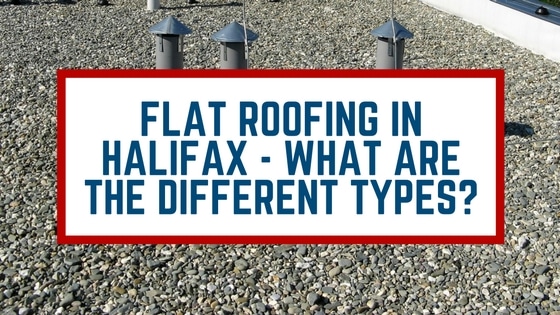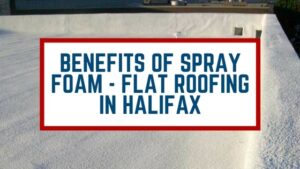Flat Roofing in Halifax – What are the different types?
TPO Flat Roofing:
Thermoplastic polyolefin, or TPO, roofing is a thin, rubberlike, single-ply sheet membrane for roofing commercial and industrial structures. The raw TPO resin is mixed with materials to resist weathering and fire then rolled into thin sheets that are bonded to the top and bottom of a polyester fiber core. It can be nailed down with special mechanical fasteners or glued down with special adhesives formulated for roofing. Adjacent sheets are welded together with a heat gun blasting hot air at over 500 degrees Celsius to form a watertight roof. It is often covered with gravel \”ballast\” to prevent wind and sun damage.
There are, however, some problems with TPO. It is relatively resistant to tearing, but if it does tear (or is punctured), it can allow water underneath that will cause the TPO to degrade further. The ballast gravel that is added to hold the sheets in place and provide extra protection from the sun can contribute to tearing if disturbed by wind, maintenance men or birds. Over the years, the UV can weaken the TPO, and it will dry out and crack.
EPDM Flat Roofing:
Ethylene propylene diene monomer (EPDM) is a synthetic rubber. It can be purchased in rolls of sheets that are used to cover flat roofs. It is the black tar-like plastic covering you sometimes see on the flat roofs of industrial buildings–often covered, or partially covered, with a layer of gravel. It protects and insulates the building, but it has some problems.
EPDM has a problem forming attachments–not only with other things, but attachments between sheets of EPDM. The EPDM sheets on a roof must attach to each other and must also fit around pipes and other fixtures that sometimes have unusual shapes. They are two major causes for EPDM working loose: it was improperly sealed in the first place or the cumulative effects of ultraviolet (UV) radiation causes the sealant to dry out and crumble. Also, tenting is when the EPDM becomes unattached from the roof and billows up in “tents.” This problem is a precursor to other, more serious problems. Once tenting occurs, the EPDM is easier to puncture and pools of water are easier to collect.




